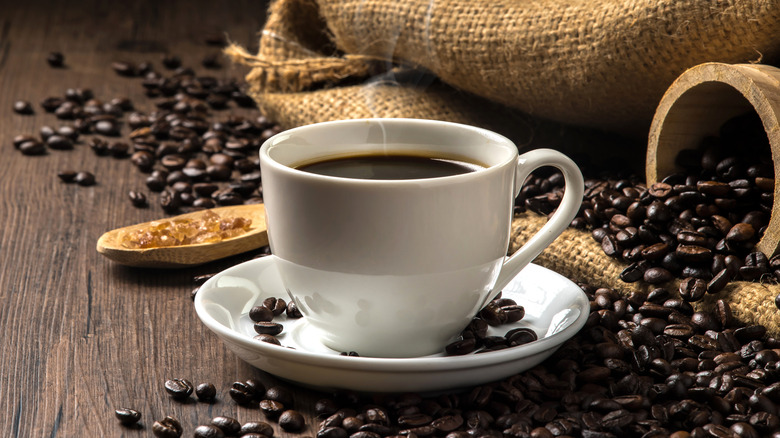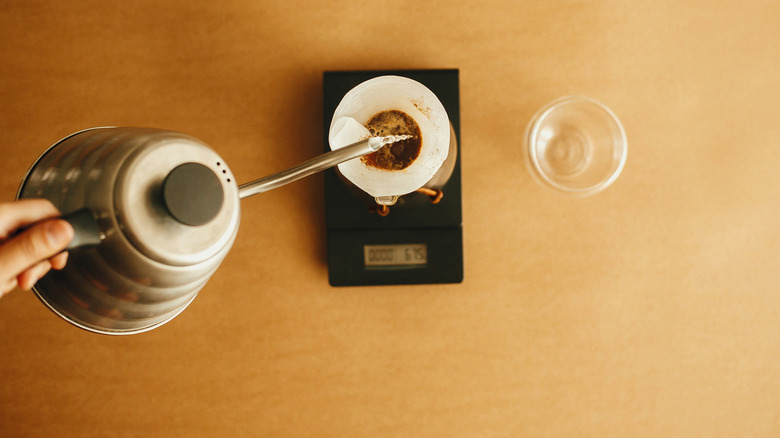The Real Reason You Should Be 'Blooming' Your Coffee
There's nothing quite like that first steaming hot cup of coffee in the morning. There are countless types of brewing methods and beans that can go into crafting your perfect cup, many of which depend on the method you use. If you're a pour-over enthusiast, you may put a lot of effort into your coffee experience and feel like you have it down to a science. But even the most ardent fans may be forgetting an essential part — blooming your coffee. And, if you're a coffee-lover, this is a step you really don't want to overlook.
Now, this process doesn't apply if you're the type to get coffee out of pods or if you simply trust your drip coffee maker to do the job. However, if you're devoted to the pour-over method, or you're looking to enhance your coffee brewing game, here's what you need to know. Simply put, blooming is the reaction in the pour-over process where the carbon dioxide gases from within the coffee beans that were imparted during roasting are released as the water hits them, making its way through (via The Roasters Pack). In order to achieve the ideal brew, you want to pour a small amount of water, just wetting the grounds you've prepared, and wait until the bloom settles down a bit before continuing to add water (via Serious Eats). You'll be able to see a bit of a physical reaction in the beans — this is called blooming.
Why bother with the extra step?
Why should you bother to add more time to the process? One simple reason: a better cup of coffee. Many coffee aficionados wouldn't dream of buying pre-ground coffee, knowing that grinding it just before drinking means your brew will be a lot more flavorful (via Siena Coffee Company). That's because the minute a coffee bean is finished roasting, those carbon dioxide gases start to escape (a process called degassing). Grinding the beans expedites that process even more.
While it may seem like those gases escaping doesn't really matter — after all, the beans are still there! — it does if you care about flavor. Those carbon dioxide gases are interestingly where a lot of the flavor in your coffee comes from, which means you want your grinds to retain as much of them as possible. This is the reason that old, stale coffee beans can be lacking flavor.
However, when you're ready to drink your cup of joe, you need to get rid of those precious gases. Carbon dioxide remaining in your beans can make your coffee taste somewhat sour, and it also repels water, which impacts how much of those aromatic notes and oils the water can extract from your beans (via Driftaway Coffee). The process of blooming your coffee isn't too onerous — you should wait about 30 to 40 seconds for the initial pour of water to settle before you continue. This small investment of extra time will yield a much tastier cup.

